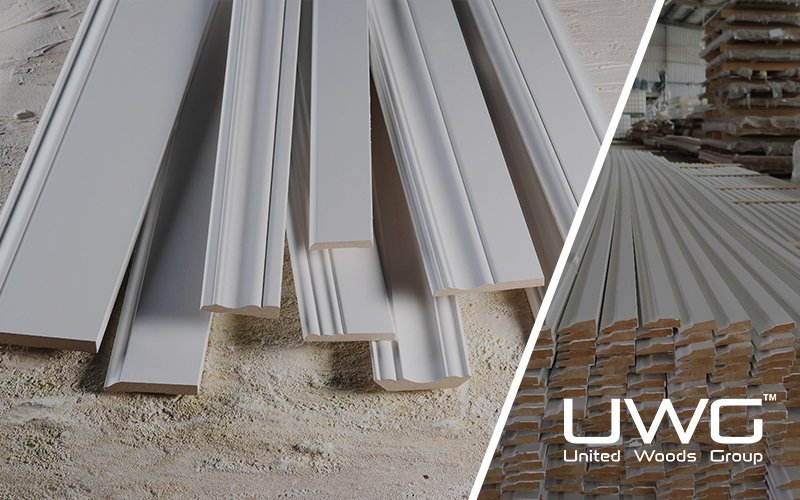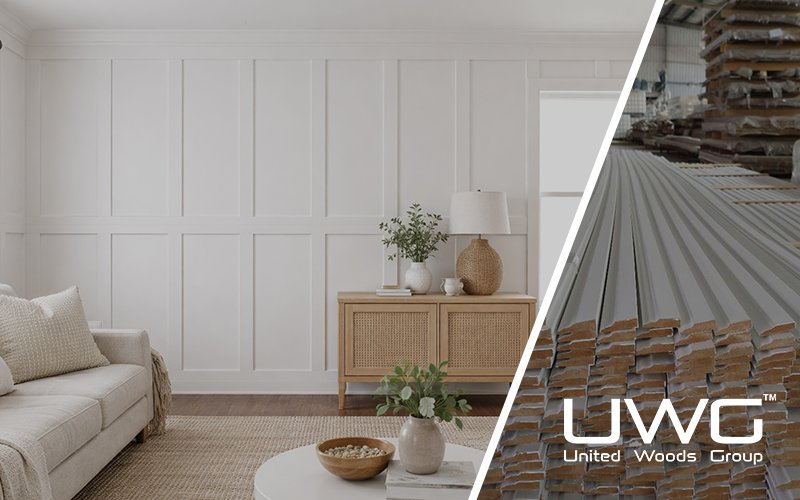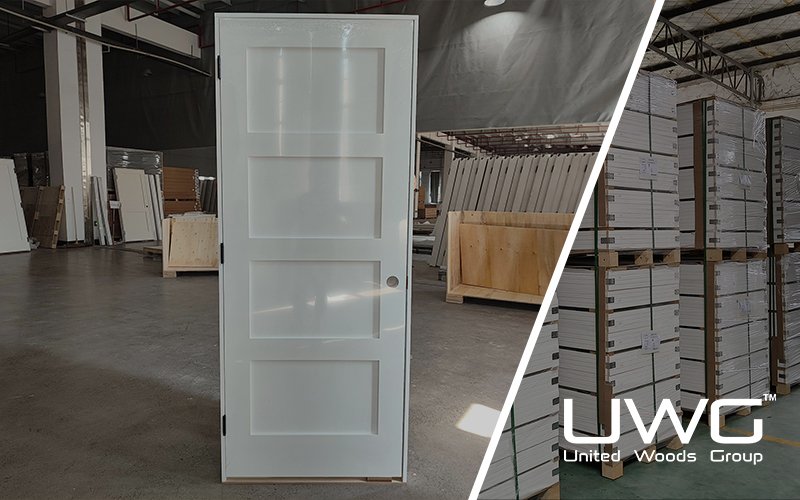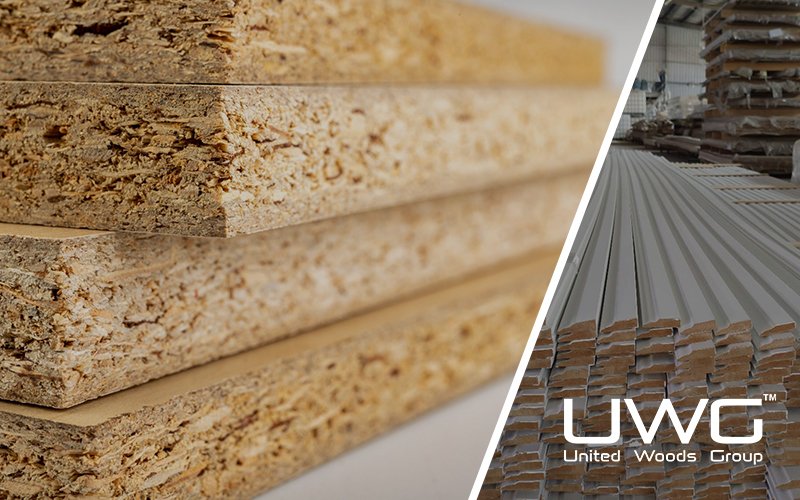*When selecting interior doors for a home or commercial space, aesthetics, durability, and cost all come into play—but the finish is often what defines the final look and feel. From primed surfaces ready for customization, to sleek painted doors, warm stained wood tones, or stylish veneer designs, the variety can be overwhelming. So what is the difference between them? How should we choose?**
*In the surface treatment of the door: A primed door comes pre-coated with a base layer of primer, providing a smooth surface that’s ready for your final paint color; A painted door comes fully finished with a smooth, durable topcoat, offering a clean, consistent look that’s ready to install without any additional work; A stained door showcases the natural beauty of the wood grain, adding warmth and character to any interior space; A veneered door is made by applying a thin layer of real or engineered wood (veneer) over a core material like MDF or particleboard, creating the appearance of solid wood at a more affordable cost. If you’re looking for flexibility,primed doors allow custom paint, For a clean and uniform look, painted door are ideal. If you prefer a natural,warm texture, stained or wood-veneered finishes add richness.
The best way to decide is to match the finish to your priorities—budget, design style, durability needs, and installation plan. If you’re looking for flexibility, primed doors allow custom paint. For a clean and uniform look, painted doors are ideal. If you prefer a natural, warm texture, stained or wood-veneered finishes add richness. In this guide, We’ll walk you through the pros and cons of each finish type, and help you understand how to choose the perfect one based on your project’s goals.
Let’s dive into each finish — and find out which one suits your build or catalog best.
What is primed/ painted/ stained/ veneered?
Primed, painted, stained, and veneered refer to the four most common finish options for interior doors.
A primed door is a door that has been coated with a base layer of primer, typically white or light gray, during the manufacturing process. This primer serves as a preparatory surface, sealing the door and allowing for easier application of paint or other finishes. Primed doors are ideal for builders or homeowners who want customization flexibility, as they can be painted in any color to match interior décor. They also help improve paint adhesion and durability. Commonly made from MDF, wood, or molded materials, primed doors are cost-effective and ready for final finishing on-site or before installation.
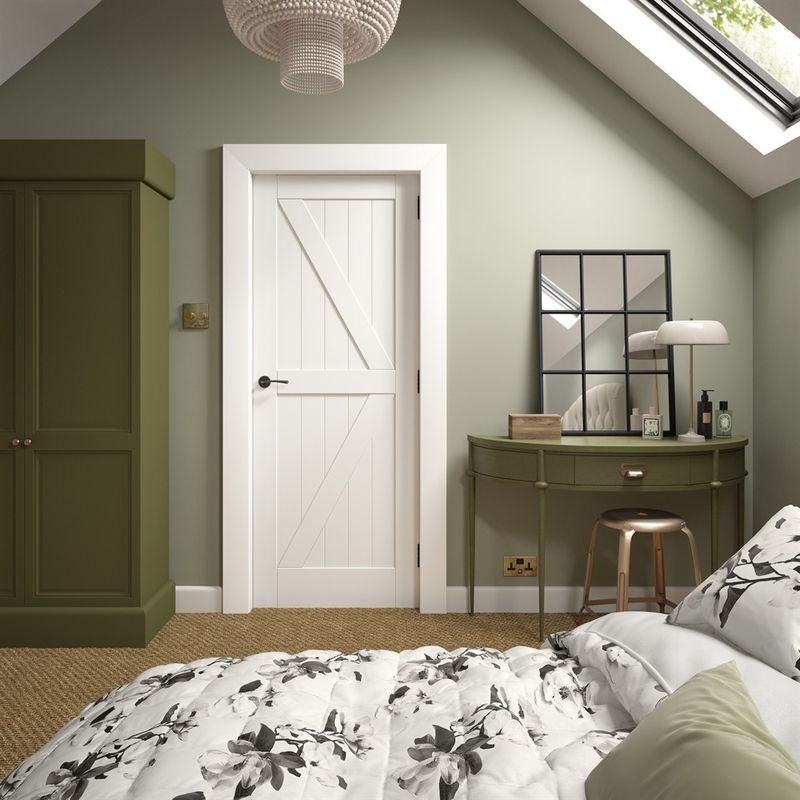
A painted door is a fully finished door that has been coated with one or more layers of paint, typically in a factory-controlled environment. Unlike primed doors, painted doors arrive ready for installation with no need for additional finishing work. They offer a smooth, uniform surface and come in a wide range of colors to match various interior design styles. Painted doors are commonly made from MDF, solid wood, or molded materials, and are often coated with durable, scratch-resistant paints. This finish is ideal for projects that demand consistent aesthetics, time-saving installation, and low maintenance over time.
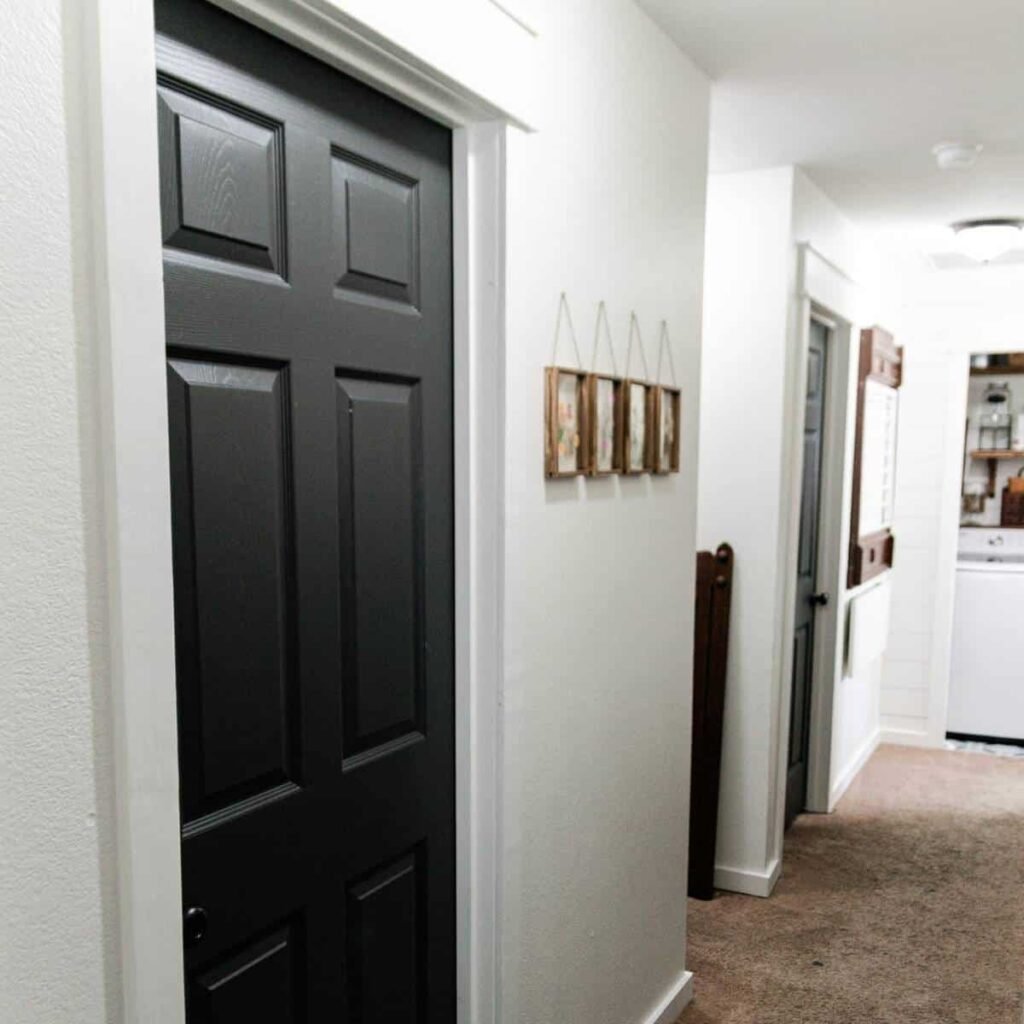
A stained door is a wood or wood-veneer door that has been treated with a wood stain to enhance its natural grain and color. Unlike painted doors, which cover the surface entirely, stained doors highlight the unique texture and pattern of the wood, offering a warm, rich, and organic appearance. Commonly used with hardwoods like oak, walnut, or alder, stained finishes are popular in traditional, rustic, or high-end interiors. They come in various tones, from light to dark, and are typically sealed with a protective clear coat. Stained doors add timeless character and are ideal for showcasing natural wood beauty.
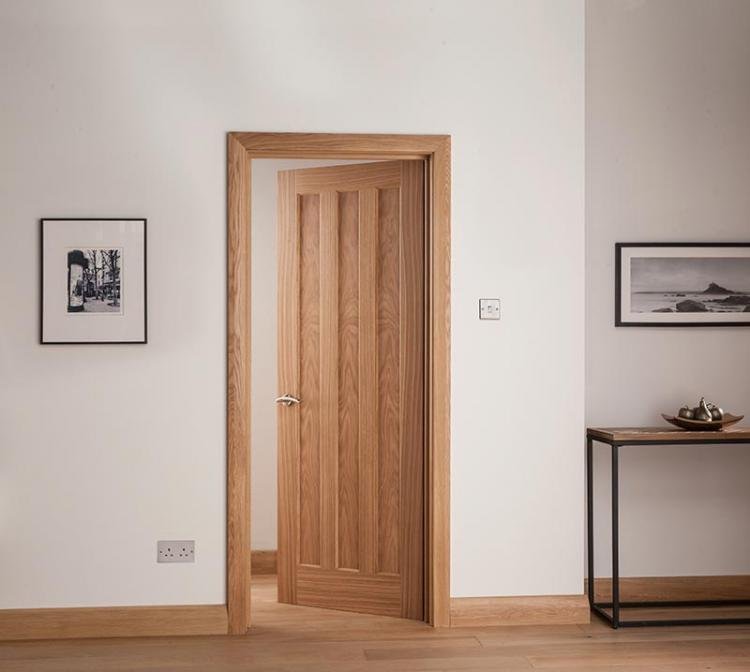
A veneered door is a type of interior door that features a thin surface layer—called a veneer—applied over a core material such as MDF, particle board, or solid wood. Veneered doors provide the look of natural wood or other finishes without the cost and weight of solid wood. There are three common types of veneers: wood veneer, melamine veneer, and PVC veneer. Wood veneer is made from real wood slices, offering authentic grain patterns and a premium appearance, often used in upscale projects. Melamine veneer is a paper-based decorative layer infused with resin, providing a pre-finished, wear-resistant surface in various colors and woodgrain designs—ideal for budget-conscious, high-traffic applications. PVC veneer uses plastic film to replicate wood textures and colors while offering excellent moisture and scratch resistance, making it suitable for kitchens, bathrooms, or utility rooms. Veneered doors combine cost-efficiency, visual appeal, and practical performance, catering to both modern and traditional interiors.
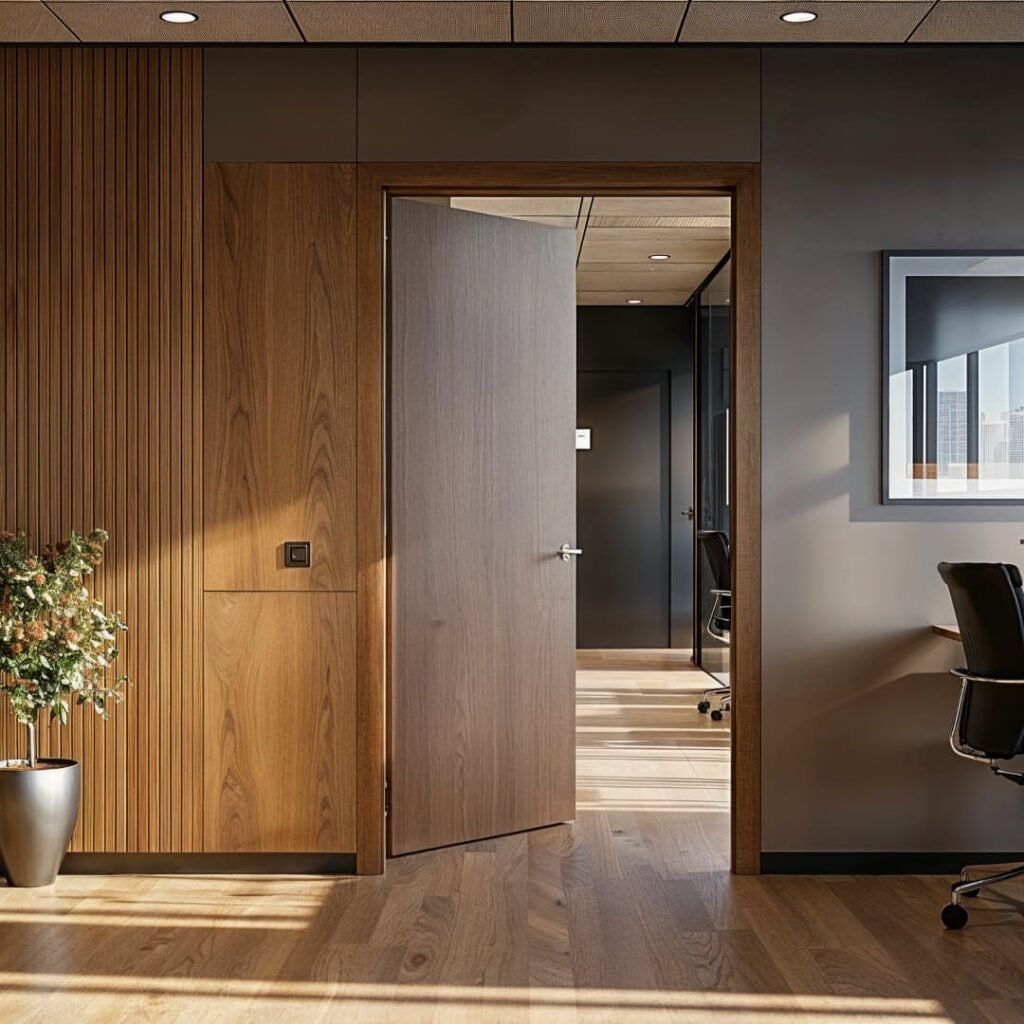
Primed doors offer maximum flexibility, while painted doors offer convenience and a polished, factory finish. Builders often choose primed for tailored interiors; wholesalers might stock both for different buyer needs.
Can primed interior doors be stained?
Technically, yes — but it’s not recommended. Primed doors are sealed with a white or gray basecoat that’s made for painting, not staining. If you try to stain over it, the result is often blotchy and uneven because stain needs direct contact with raw wood to penetrate properly.
You can use special opaque stains or glazes to mimic the stained look on a primed surface, but that involves extra time and skill. For a true stained finish, always start with unfinished or stain-grade wood.
Alternative: If you’re looking for flexibility, primed doors are best kept for custom paint jobs where color accuracy and coverage matter most.
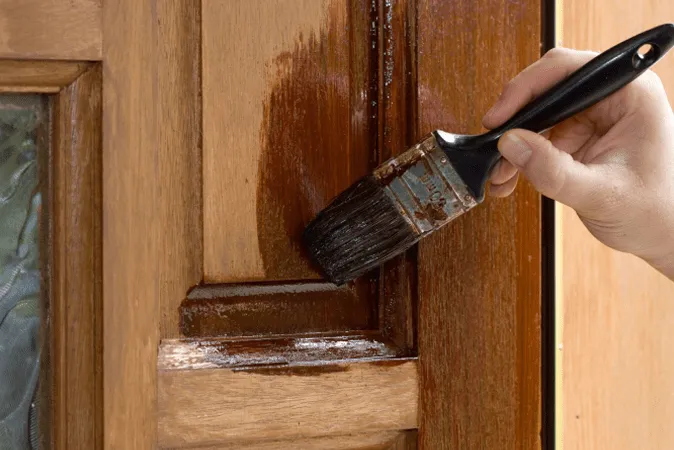
Should I stain or paint my interior doors?
It all comes down to the final look and maintenance preferences.
- Stained doors show off the natural wood grain. Perfect for rustic, traditional, or upscale designs. They require careful matching to wood tone and need regular touch-ups over time.
- Painted doors cover the wood entirely, offering solid color choices and a more modern or minimalist finish. They’re also easier to touch up and clean.
A good rule: If the home’s trim or baseboards are painted, go with painted doors for consistency. If the wood is exposed, stained doors give a seamless look.
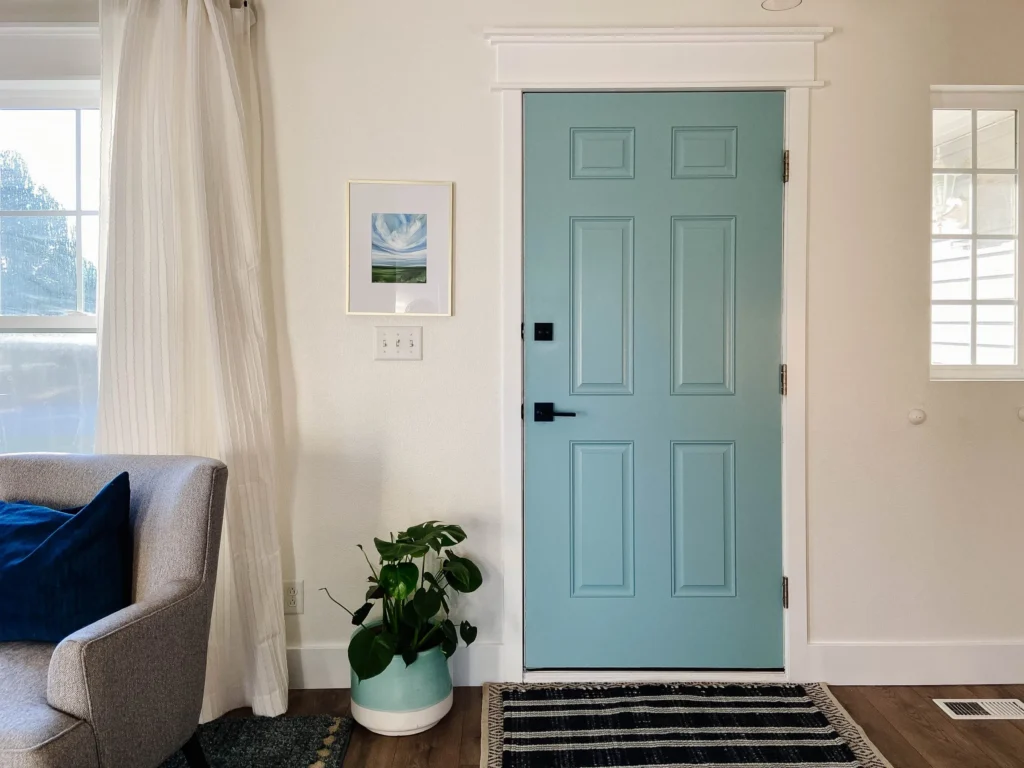
Is paint grade or stain grade wood better for my project?
It depends on the final look you want and the wood quality you’re dealing with.
- Paint Grade: Made from MDF, finger-jointed pine, or lower-quality wood. Designed to be painted — grain and blemishes will be covered.
- Stain Grade: Made from high-quality wood like oak, maple, or cherry. Designed to be stained — shows natural grain patterns.
Choose paint grade for cost-efficiency or minimalist interiors. Choose stain grade for natural, high-end finishes that showcase craftsmanship.
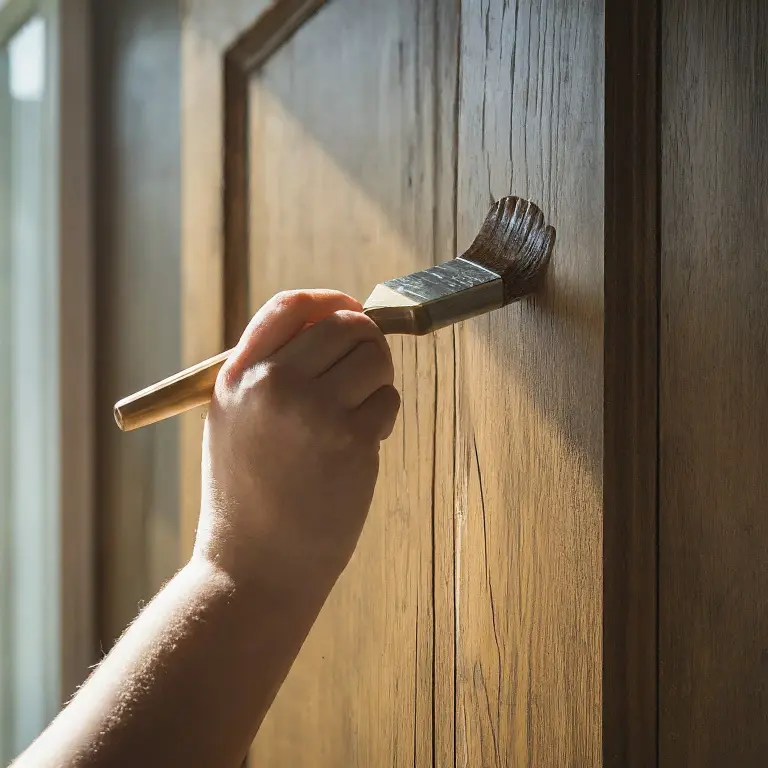
Why choose wood stained interior doors for upscale builds?
In high-end homes or commercial buildings, stained wood doors signal luxury and craftsmanship.
They:
- Showcase real wood grain
- Blend beautifully with hardwood flooring or cabinetry
- Offer timeless appeal
Even though they require more maintenance and cost more than painted doors, they can increase perceived value — which is essential in luxury builds or renovations.
Builders often include these as upgrades in custom quotes or premium packages.
Are veneered doors worth it for modern interior designs?
Absolutely. Veneered doors combine the look of real wood with the cost-efficiency of engineered cores.
- The outer layer is a thin slice of hardwood (oak, walnut, etc.)
- The core is MDF or engineered wood — making it lightweight and stable
- Veneers are often pre-finished, saving time on-site
This makes them:
- Cost-effective
- Durable and warp-resistant
- Stylish and available in modern finishes
For modern interiors with flat panel or flush styles, veneered doors are the go-to.
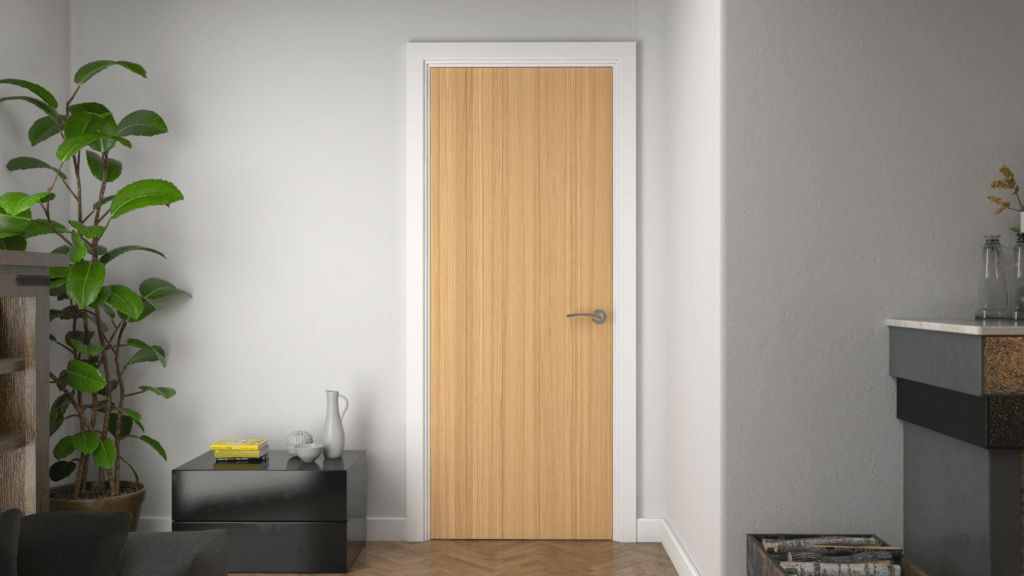
Stain grade vs paint grade front doors: which sells better?
This depends on region and buyer preferences.
- In traditional or upscale markets, stain grade front doors with rich wood tones are more popular.
- In urban or modern builds, paint grade doors in matte black, deep gray, or bold colors dominate.
From a wholesaler’s perspective:
- Stock both if you serve a mixed market.
- Bundle stain-grade options with sidelites or transoms for upselling.
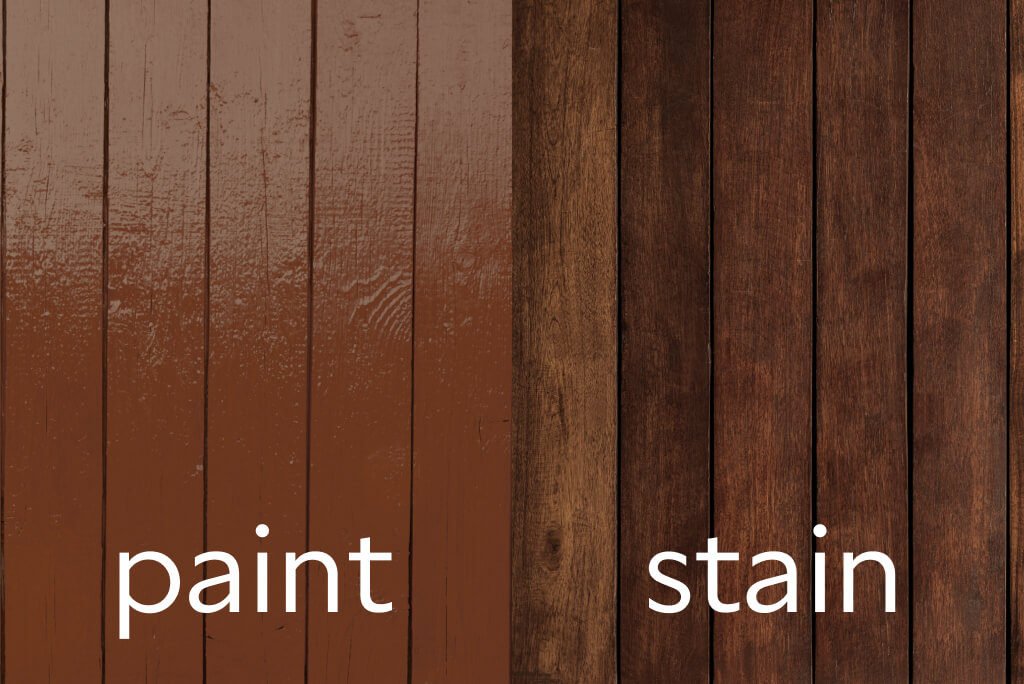
Interior Door Finish Comparison Chart
| Finish Type | Pros | Cons | Best Used In |
|---|---|---|---|
| Primed | – Ready for custom painting – Cheaper than pre-finished – Great for bulk orders | – Requires painting – Not suitable for staining – Surface may need touch-up | – Builders needing flexible finish options – Budget-friendly projects |
| Painted | – Fully finished and ready to install – Smooth, consistent color – Easy to clean (especially in semi-gloss/satin) | – Less flexibility (color is fixed) – Grain is hidden (no wood texture) | – Modern interiors – High-traffic areas like bathrooms and kitchens |
| Stained | – Highlights natural wood grain – Luxurious and traditional look – Can increase property value | – Requires maintenance – More expensive – Harder to color-match | – Custom homes – Upscale or rustic designs – Projects emphasizing craftsmanship |
| Veneered | – Real wood look at a lower cost – Lightweight and stable – Available in modern, sleek styles | – Can chip or peel over time – Not sandable or restainable – Limited wood depth | – Contemporary spaces – Multi-unit developments – Modern commercial interiors |
Final Thoughts
Your door finish says a lot about quality and design. Whether you sell or install, understanding these differences helps you offer better choices. Got questions? Feel free to contact us!



